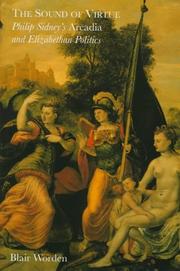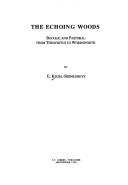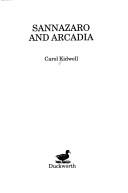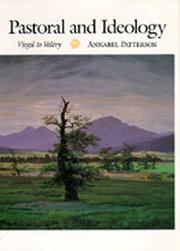| Listing 1 - 8 of 8 |
Sort by
|
Book
ISBN: 9781472504456 9780715638675 071563867X 1472504453 1472519833 1472555872 Year: 2013 Publisher: London Bloomsbury
Abstract | Keywords | Export | Availability | Bookmark
 Loading...
Loading...Choose an application
- Reference Manager
- EndNote
- RefWorks (Direct export to RefWorks)
Virgil's book of bucolic verse, the Eclogues, defines a green space separate from the outside worlds both of other Roman verse and of the real world of his audience. However, the boundaries between inside and outside are deliberately porous. The bucolic natives are aware of the presence of Rome, and Virgil himself is free to enter their world. This world is, in many ways, a poetic replication of the public and private gardens of Virgil's Roman audience, enclosed green spaces which afforded the citizen sheltered social and cultural activities, temporary respite from the turbulence of public life, and a tamed landscape in which to play out the tensions between the simple ideal and the complexities of reality. In Virgil's Garden Frederick Jones looks at the Eclogues in terms of the relationship between its contents and its cultural context, making connections between the Eclogues and the representational modes of Roman art, Roman concepts of space and landscape, and Roman gardens.--Book Jacket.
Book
ISBN: 9781912168255 1912168251 9781912168262 191216826X Year: 2021 Publisher: Londen Ad Lissum
Abstract | Keywords | Export | Availability | Bookmark
 Loading...
Loading...Choose an application
- Reference Manager
- EndNote
- RefWorks (Direct export to RefWorks)
"Long anticipated and hugely welcome, Paul Holberton’s A History of Arcadia is a close and thorough examination of a great number of original texts of classical and early and later modern pastoral poetry, literature and drama in ancient Greek, Latin, Italian, French, Spanish, Portuguese, Dutch, German and English, and of a wide range of visual imagery, ending just before 1800. The book analyses the development of pastoral as a means of representing human happiness on this earth in the requited wooing of girl and boy, to whose feelings early modern pastoral gives voice. This tremendous book is an iconographic study of Renaissance and Baroque pastoral and related subject matter, with an important chapter on the 18th century, both in the visual arts, where pastoral is very poorly understood, and in words and performance, about which many false preconceptions prevail. The study begins with Virgil’s use of Theocritus and an analysis of what basis Virgil provided for Renaissance pastoral and what, by contrast, stemmed from the medieval pastourelle. Pastoral developed notably in the Venetian High Renaissance. Its texts incorporated Petrarchist and Neoplatonic ideas of love, of which this book charts the development and evolution with unprecedented precision, considering also the female nude in art. There is a novel and polemical discussion of the development of landscape subjects in art, from Giorgione to Claude. The contributions of the most influential or representative authors – Petrarch, Sannazaro, Montemayor, Tasso, Guarino, Lope de Vega, Cervantes, Honoré d’Urfé, Cornelis de Hooft, Shakespeare and lastly Salomon Gessner – are considered beside many interesting more minor ones – Arsocchi, Bernardim Ribeiro, Clément Marot, Cieco d’Adria, John Fletcher, Fontenelle – and the verses of madrigals. There is a chapter on ‘Being Rural’ – what we can say about the reality of life in the country in the early modern period. There is a chapter on ‘Et ^in Arcadia Ego’ that introduces new evidence for the dating of Poussin’s famous work by reference to a neglected work by Sébastien Bourdon in Yale; another on a pastoral composition by Rubens that has not been considered as such. There is an important and bold discussion of self-projection (‘metachronic’ representation) by monarchs and courtiers across Europe in the 17th century, both within pastoral and without, which illuminates profound differences between Protestant and Catholic culture. Coming from the study of earlier periods, the author is able to throw new light on the Rococo – figures such as John Gay, Watteau, Gessner and Gainsborough – and to explain the termination of pastoral writing and art with the embrace of modernity in form and means of expression. All texts are given in the original language and all translated into English, while the visuals are beautifully reproduced: the book is also an anthology." --
Arcadia in art --- Art, Renaissance. --- Arcadia in art. --- Arcadia in literature. --- Pastoral fiction, European --- History and criticism.
Book
ISBN: 1909686697 1909686670 9781909686694 9781909686670 9781909686663 1909686662 Year: 2015 Publisher: Oxford
Abstract | Keywords | Export | Availability | Bookmark
 Loading...
Loading...Choose an application
- Reference Manager
- EndNote
- RefWorks (Direct export to RefWorks)
Pastoral art. --- Pastoral poetry. --- Pastoral literature. --- Arcadian literature --- Bucolic literature --- Literature, Pastoral --- Literature --- Arcadia in literature --- Country life in literature --- Bucolic poetry --- Eclogues --- Idyllic poetry --- Rural poetry --- Country life --- Poetry --- Arcadian art --- Art, Pastoral --- Bucolic art --- Art --- Pastoral art --- Arcadia in art. --- Arcadia in literature. --- Arcadie dans l'art --- Arcadie dans la littérature --- Influence.

ISBN: 0300066937 Year: 1996 Publisher: New Haven London : Yale University Press,
Abstract | Keywords | Export | Availability | Bookmark
 Loading...
Loading...Choose an application
- Reference Manager
- EndNote
- RefWorks (Direct export to RefWorks)
Arcadia in literature. --- Didactic literature, English --- Pastoral literature, English --- Politics and literature --- Virtue in literature. --- History and criticism. --- History --- SIDNEY (SIR PHILIP) --- ARCADIA --- POLITICAL AND SOCIAL VIEWS --- POLITICS AND LITERATURE --- GREAT BRITAIN --- HISTORY --- 16th CENTURY --- RENAISSANCE STUDIES
Book
ISBN: 9781803271651 9781803271644 Year: 2022 Publisher: Summertown Archaeopress Archaeology
Abstract | Keywords | Export | Availability | Bookmark
 Loading...
Loading...Choose an application
- Reference Manager
- EndNote
- RefWorks (Direct export to RefWorks)
Bringing together for the first time all the available evidence for the origination and development of the concept of Arcadia, from the Homeric period to the early Roman Empire, this book brings to light a treasure-trove of evidence, both well-known and obscure or fragmentary, filling a significant gap in the scholarly bibliography.
History of civilization --- Ancient history --- Art and literature --- Greek literature --- Arcadia in literature. --- Arcadia in art. --- Art, Greek. --- Art and literature. --- Greek literature. --- History and criticism. --- Greece. --- Political Science

ISBN: 9050630502 Year: 1990 Publisher: Amsterdam Gieben
Abstract | Keywords | Export | Availability | Bookmark
 Loading...
Loading...Choose an application
- Reference Manager
- EndNote
- RefWorks (Direct export to RefWorks)
Pastoral literature --- History and criticism. --- Theocritus --- Theocritus. --- Influence. --- -Arcadian literature --- Bucolic literature --- Literature, Pastoral --- Literature --- Arcadia in literature --- Country life in literature --- History and criticism --- -Theocritus --- Teócrito --- Teokryt --- Theókritos --- Feokrit --- Theokrit --- Θεόκριτος --- Influence --- -History and criticism --- Théocrite --- Theokritos

ISBN: 0715624776 Year: 1993 Publisher: London Duckworth
Abstract | Keywords | Export | Availability | Bookmark
 Loading...
Loading...Choose an application
- Reference Manager
- EndNote
- RefWorks (Direct export to RefWorks)
Arcadia in literature --- Pastoral poetry, Italian --- -Pastoral poetry, Latin (Medieval and modern) --- -Poets, Italian --- -Poets, Latin (Medieval and modern) --- -Latin poets (Medieval and modern) --- Italian poets --- Latin pastoral poetry, Medieval and modern --- Latin poetry, Medieval and modern --- Italian pastoral poetry --- Italian poetry --- History and criticism --- Biography --- Sannazaro, Jacopo --- -History and criticism --- Pastoral poetry, Latin (Medieval and modern) --- Poets, Italian --- Poets, Latin (Medieval and modern) --- Latin poets (Medieval and modern) --- Sannazaro, Jacopo, --- Malaspina di Sannazaro, Luigi --- Actius Syncerus Sannazarius --- Sannazarius, Jacobus --- Pastoral fiction [Italian ]

ISBN: 0520058623 Year: 1987 Publisher: Berkeley Los Angeles University of California Press
Abstract | Keywords | Export | Availability | Bookmark
 Loading...
Loading...Choose an application
- Reference Manager
- EndNote
- RefWorks (Direct export to RefWorks)
Pastoral literature --- -Arcadian literature --- Bucolic literature --- Literature, Pastoral --- Literature --- Arcadia in literature --- Country life in literature --- History and criticism --- Virgil --- -Virgilio Marone, P., --- Vergilius Maro, Publius --- Vergilīĭ, --- Virgile, --- Vergílio, --- Wergiliusz, --- Vergilīĭ Maron, P. --- Vergilīĭ Maron, Publīĭ, --- Verhiliĭ Maron, P., --- Vergil, --- Virgilio, --- Virgilīĭ, --- Virgilius Maro, P., --- Virgilius Maro, Publius, --- Virgil Maro, P., --- ווירגיל, --- וירגיליוס, --- ורגיליוס, --- מרו, פובליוס ורגיליוס, --- فرجيل, --- Pseudo-Virgil, --- Pseudo Virgilio, --- Virgilio Marón, Publio, --- Bhārjila, --- Criticism and interpretation --- -History --- Vergil --- Virgile --- Virgilio Máron, Publio --- Virgilius Maro, Publius --- Vergili Maronis, Publius --- Virgil. --- History. --- History --- Virgilio Marone, P., --- Vergilius Maro, P. --- Vergilius --- Virgilio Marone, P. --- Vergilīĭ --- Vergílio --- Wergiliusz --- Vergilīĭ Maron, Publīĭ --- Verhiliĭ Maron, P. --- Virgilio --- Virgilius Maro, P. --- Virgil Maro, P. --- Pseudo-Virgil --- Pseudo Virgilio --- Virgilio Marón, Publio --- Bhārjila --- Marone, Publio Virgilio
| Listing 1 - 8 of 8 |
Sort by
|

 Search
Search Feedback
Feedback About UniCat
About UniCat  Help
Help News
News